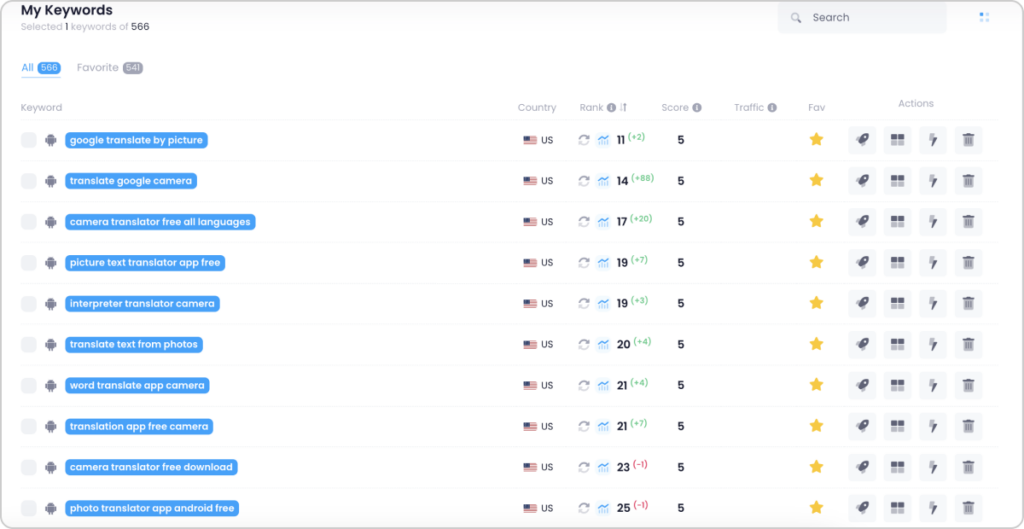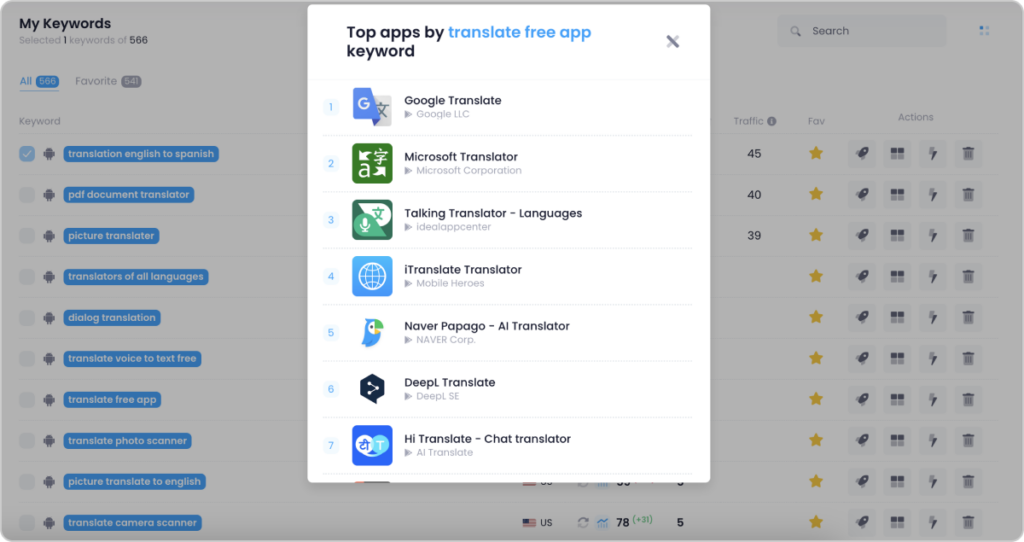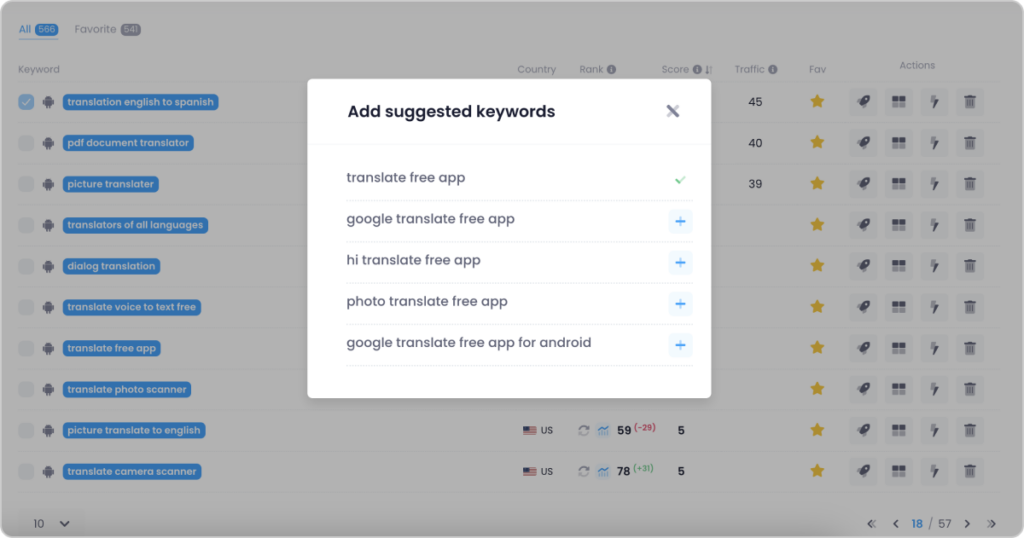App Store Optimization (ASO) is one of the most important parts in mobile marketing helping developers to attract organic traffic and achieve desired results in app promotion and monetization. In general, ASO started to be more popular among mobile specialists in recent years and despite this fact it already proved its effectiveness and influence on app success. But nevertheless there are still myths connected with ASO leading to the fact that not all the mobile devs and marketers are ready to invest funds and time to ASO development and in such a way lose a considerable part of app traffic and their earnings. In this article we would like to bust the most wide-spread myths about ASO so to ensure everyone that it worth working with and investing to.
Myth 1: ASO is Only for Big Development Companies
One of the most common myth about ASO is that it is only essential for big development companies and studios who can invest a lot of funds to this process using all the available tools and methods and only in such a way the optimization process will be profitable for the application. But let’s be honest, nowadays mobile marketing is already at the stage when thousand of sources about ASO are available and it is not as difficult as it was previously to research, get the information and try to proceed with ASO even if you work with couple of apps. Of course, we do understand that for now more and more experienced ASO specialist are on the market, but despite this fact it is still possible to make ASO at your own, at least at a basic level so to be able both get ranked and describe the application for your future users showing all the advantages and making them to download the app.
Myth 2: ASO is a One-Time Process
Another misconception is that ASO is a one-time process. In truth, ASO is an ongoing effort that requires continuous monitoring, evaluation, and adjustment. As applications evolve and business requirements change, regular optimization is necessary to maintain optimal performance and efficiency.
Working both with Google Play and AppStore, you could notice how stores are changing all the time influencing the way to work with ASO as well. Unfortunately, a lot of app developers accept optimization not as regular activity, but as a process without any investment of time. But this approach leads only to the loses in ASO effectiveness as well as the loses of ranks in the search list for keywords what is even more critical, as do not forget that ASO mainly influences organic traffic particularly from the search.
Here are some recommendations how to build permanent ASO activities to make sure that you stay up-to-date in this process:
- Follow all the updates Google Play and AppStore provide officially as well as try to notice all the changes in store work by yourself – this will help to make sure that you follow all the guidelines and adjust your work accordingly
- Update the keywords list for your app as often as possible – try to find new keywords relevant for your app as well as follow the changes in ranks to make sure that your positions will give positive influence on organic traffic

- Analyze the way your competitors work with ASO – this will help you to get both the current trends in text and visual optimization

Myth 3: ASO is Expensive and Complicated
A common misconception about ASO is that it is both expensive and complicated process. While there can be costs and complexities involved, the reality is that ASO is accessible and beneficial for both app development studios and solo developers as well as the long-term advantages of ASO often overcome the investments of funds and time.
While there may be some spendings associated with implementing ASO, such as purchasing tools and hiring ASO specialist if you would like them to proceed with optimization, these spendings are often offset by long-term savings. In perspective ASO can give the advantages over competitors in user attraction and engagement as well as in monetization as optimization gives qualitative traffic consisting of qualitative users.
Despite the fact that many consider paid ASO tools as a must in optimization, that’s not obligatory and you can find free ASO tools helping you to work with keywords, their popularity and ranks being the most important step in optimization as everything is built starting with the keywords. Foe example, even Keyapp being the platform that provides keyword promotion to the top of the search list, has free ASO tools that can be used by everyone without any spendings. At the same time, our tools can be used to monitor, analyze, and optimize applications without incurring significant costs.

Myth 4: ASO Can Be Done with Tools Alone
Relying solely on tools for ASO is another common myth. Of course, everyone agrees that now there is a great variety of modern tools for ASO helping optimize texts, visuals, in-app purchases, app reputation etc. While these tools are extremely important and help to achive the maximum efficiency, human expertise still should be applied. Skilled ASO specialists are needed to interpret data, make decisions, and apply best practices according to the app stores changes and trends.
The Role of Tools in ASO
- Automation: Tools can automate repetitive tasks, gather data, and provide insights into how apps are performing. They make the process more efficient, allowing real-time monitoring and quick problem detection.
- Data Collection: Tools collect large amounts of data from various sources like user interactions, server performance, and network traffic. This data is crucial for understanding how well applications are working and where improvements are needed.
The Necessity of Human Expertise
- Contextual Understanding: Tools can provide data, but they can’t understand the context in which an application operates. Human expertise is needed to interpret this data considering business goals, user needs, and other factors.
- Strategic Decision-Making: Skilled professionals analyze the data from tools to make strategic decisions. They can prioritize optimization efforts based on business impact, user experience, and resource constraints.
- Continuous Improvement: ASO is an ongoing process that involves continuous learning and adaptation. Human experts stay updated with the latest trends, technologies, and best practices, ensuring that optimization strategies evolve over time.
SUM UP
Despite all the myths around ASO, each year shows the confident increase in this niche making more and more developers to pay attention not only to the technical part of the app and paid UA, but also to organic traffic. It is obvious now that mobile markets are becoming a kind of super competitive area and require more investments to make users to download this or that app. At the same time, ASO can be done even by solo developers who have the desire to know about this niche and want to make their application successful.






















